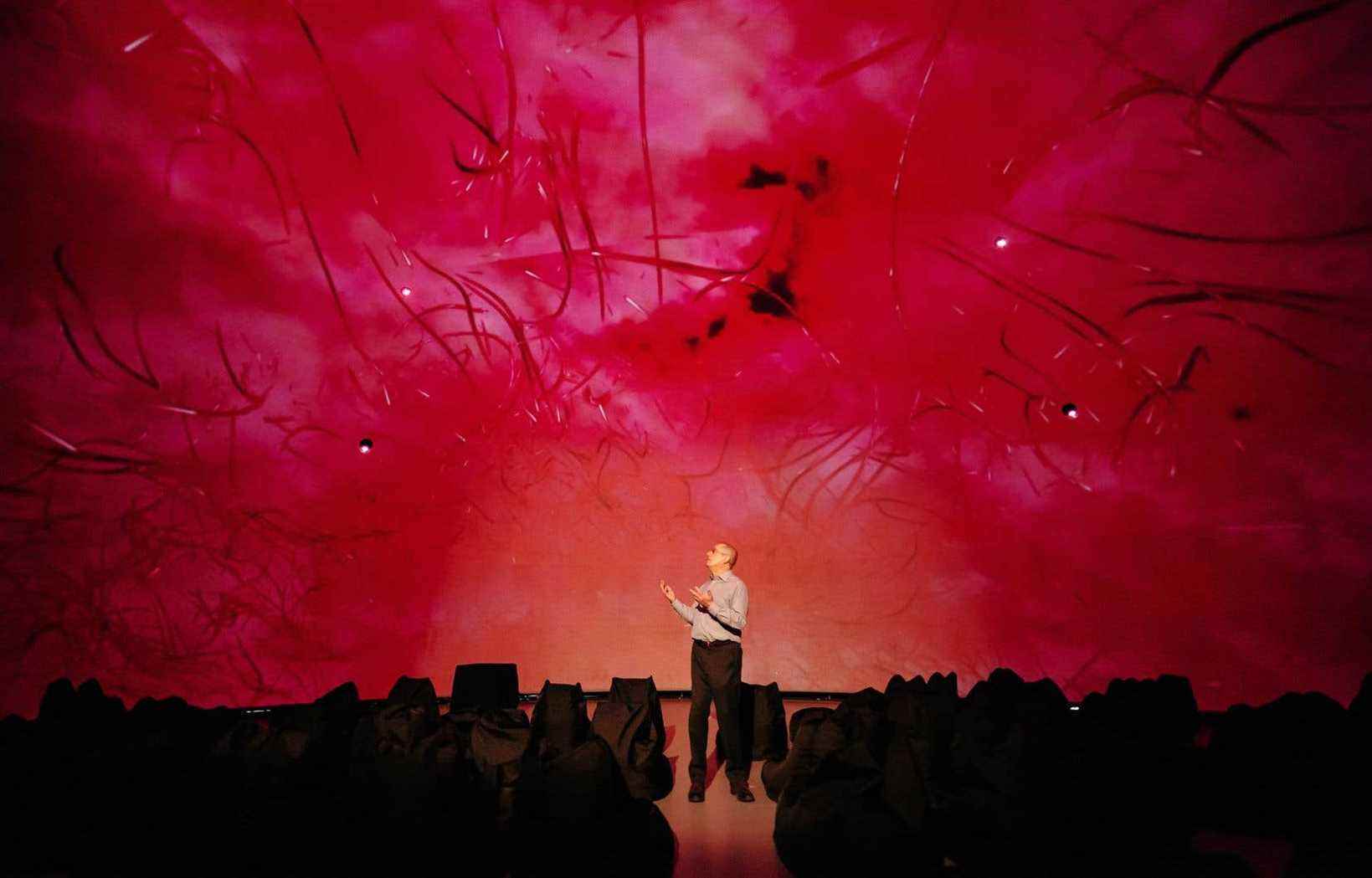At first glance, bacteria scare us, because they sometimes threaten our lives. But those that are harmful represent only a small minority of the multitude present on our planet. When we pay attention to the diversity of their forms, functions, abilities and benefits, fear quickly turns into amazement.
For a long time, scientists defined bacteria as single-celled organisms within which genetic material (DNA) floats freely: prokaryotes, as opposed to eukaryotes, whose DNA is packaged in a well-defined nucleus (a group that includes all other living organisms, from yeasts to humans). And we know them above all as microscopic beings: the vast majority of bacteria measure on average from one to five micrometers (thousandths of a millimeter).
But a recent discovery has challenged this classification, which was believed to be definitive. On February 18, Jean-Marie Volland and colleagues published a scientific article in which they describe a new bacterium having the shape of a long filament visible to the naked eye – it can reach two centimeters in length. What’s more, this giant bacterium contains two bags bounded by a membrane, one of which contains the cell’s DNA (which includes 11,000 genes, while most bacteria have around 3900!).
This extraordinary bacterium, which scientists propose to name Thiomargarita magnifica, could it be the missing link in the evolution towards the more complex cells of other living beings? Maybe we will know in a few years.
Useful and essential
The vast majority of bacteria play a positive role on our planet, says microbiologist Yves Brun, professor and researcher at the University of Montreal. “Oxygen appeared on Earth when it was produced by cyanobacteria two billion years ago. And the appearance of the oxygen produced by these cyanobacteria allowed the emergence of more complex life forms, multicellular organisms, such as plants, animals and, later, humans. »
In our everyday life, bacteria are involved in the production of foods such as yogurt, cheeses, kimchi, kombucha, sour beers or wine. The distinctive aroma and taste of a cheese, for example, comes mainly from its microbiota, this assembly of bacteria and eukaryotic microbes (often yeasts) which work together, one excreting molecules on which the other feeds. .
The appearance of oxygen produced by these cyanobacteria allowed the emergence of more complex forms of life [comme, plus tard]
“These kinds of partnerships can be extremely stable. There are a multitude of them in nature,” notes Professor Brun. This is the case of rhizobium bacteria, which live in symbiosis with leguminous plants: they form small nodules on the roots of these plants, from which they fix nitrogen from the air and make it assimilable by the plant; the latter, in exchange, provides them with carbonaceous food.
Other bacteria also live in symbiosis everywhere on the human body: on our skin, in our mouth and, of course, in our intestines, where they help with digestion. Some bacteria can even be used to heal us. In particular, studies have shown that faecal transplants can be very effective in combating Clostridium difficile. The Dr Bertrand Routy, from the CHUM Research Center, observed that a compound from a tropical fruit (camu camu) promoted the growth of the bacterium Ruminococcus bromii, present in the human gut microbiota. The researcher then realized that this proliferation reinforced the effect of a form of immunotherapy used to treat certain cancers in humans.
A great potential
At Indiana University, where he worked from 1993 until his arrival at the University of Montreal in December 2018, Professor Brun discovered that the bacterium Caulobacter crescentus makes a glue to stick to the rocks of the lakes and rivers where it lives.
And that’s not all: “When we wanted to know how the bacteria controlled the production of this glue, we discovered that these bacteria use small threads that allow them to know that they are approaching a surface. . These bacteria somehow have a sense of touch, even though they don’t have a nervous system,” he points out.
Fellow physicists have also measured the adhesion strength of this glue: they deduced that “the number of droplets necessary to cover the surface of a 25 cent coin would be sufficient to support the weight of an elephant”, says the microbiologist.
Professor Brun has just been approached by a company that would like to produce large quantities of this glue. “Industrial glues are chemically synthesized from petroleum derivatives. More and more companies want to turn to more organic glues in order to reduce the use of toxic chemicals. »
The danger of antibiotic resistance
Although harmful bacteria are in the minority, they remain the most serious and pressing problem facing the health of mankind due to their increased resistance to available antibiotics.
In 2019 alone, resistant bacteria killed more people than COVID-19 in two years. And if new classes of antibiotics aren’t found, these bacteria could kill 10 million people a year by 2050.
Traditionally, pharmaceutical companies tested chemical compounds in large libraries one by one to see if they were effective in preventing the growth of bacteria. Professor Brun’s team is proceeding in the same way, but examining in detail what is happening under the microscope, all to find substances that will kill bacteria by different mechanisms than those employed by current antibiotics. “A molecule might not kill a bacterium but substantially reduce its reproduction, this means that there is perhaps a part of the molecule which has an interesting effect: there is therefore useful information. »
Afterwards, his team uses artificial intelligence to clear the ground. “She will analyze all of this information and tell us what kinds of molecules could have an antibiotic effect. She will then use it to find such molecules in banks of chemical compounds that only exist on computers, banks in silico called “Make-on-Demand Library”, comprising tens of billions of chemical compounds that have never been synthesized for the most part, but which have been built in such a way that they can be synthesized easily, quickly and inexpensively” , explains the researcher.
